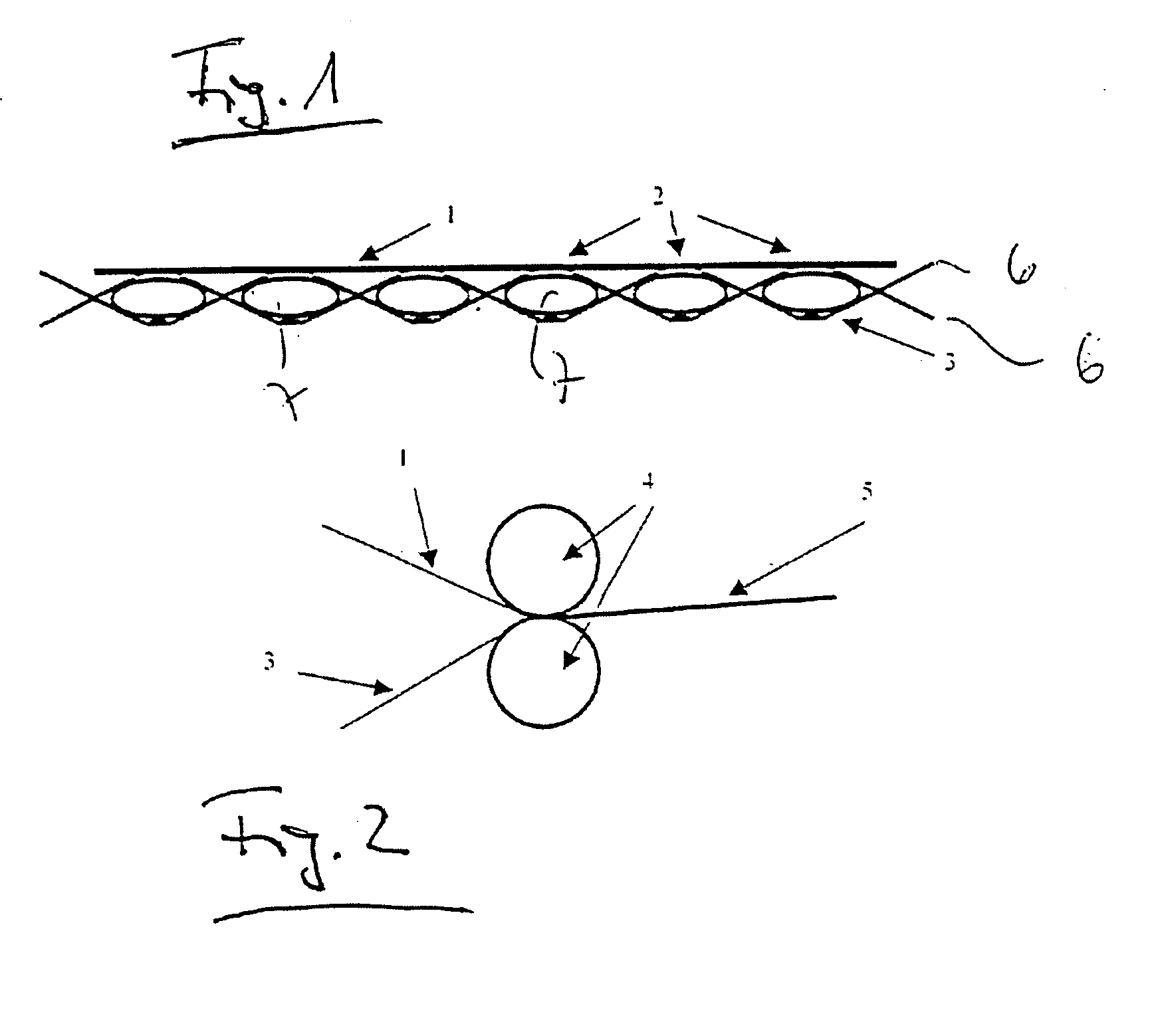Airbag and method of producing an airbag
- Summary
- Abstract
- Description
- Claims
- Application Information
AI Technical Summary
Benefits of technology
Problems solved by technology
Method used
Image
Examples
Embodiment Construction
[0016] Referring now to FIG. 1 there is illustrated a fabric including weft threads 6 and (not shown true to scale) warp threads 7. Indicated are so-called keying points 2 to which a film 1 optimized as to adhesion, resistance to leakage and strength is applied to a fabric 3 formed by weft and warp threads 6 and 7 respectively. Due to the fabric 3 being compressed by a pair of nip rollers 4 as shown in FIG. 2 the warp threads 7 are squeezed together so that they become elliptical cross-sectionally. Likewise evident from the arrangement as shown in FIG. 1 simply diagrammatical is how the keying “points”2 become flattened between film / coating and fabric.
[0017] Referring now to FIG. 2 there is illustrated a pair of nip rollers 4 between which the film 1 as cited above and the backing fabric 3 thinned in the thread densities is guided and keyed. The resulting key of film / coating and fabric is achievable, chemically, thermally or mechanically, resulting in so-to-speak a textile-strength...
PUM
| Property | Measurement | Unit |
|---|---|---|
| Pressure | aaaaa | aaaaa |
| Surface structure | aaaaa | aaaaa |
Abstract
Description
Claims
Application Information
 Login to View More
Login to View More - R&D
- Intellectual Property
- Life Sciences
- Materials
- Tech Scout
- Unparalleled Data Quality
- Higher Quality Content
- 60% Fewer Hallucinations
Browse by: Latest US Patents, China's latest patents, Technical Efficacy Thesaurus, Application Domain, Technology Topic, Popular Technical Reports.
© 2025 PatSnap. All rights reserved.Legal|Privacy policy|Modern Slavery Act Transparency Statement|Sitemap|About US| Contact US: help@patsnap.com


